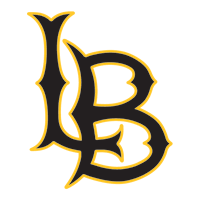


University PhysTEC program
The goal of the Physics Teacher Education Coalition (PhysTEC) project is to improve and promote the future education of future physics and physical science teachers. CSULB undergraduate and graduate students who are interested or committed to teaching high school physics are encouraged to join.
Teachers from around the area come to CSULB to share some of their best demonstrations. The PhysTEC DemoDays also give teachers a chance to collaborate and meet one another. Demonstrations cover a whole range of topics, and teachers walk away from the experience having at least a couple of new ideas.
The CSULB PhysTEC project works to address the dramatic shortage of qualified teachers of physics and physical science in the United States. It does this by experimenting with and refining models of teacher education programs, disseminating information about innovative programs to the physics community, and by working directly with physics departments to engage them in a full spectrum of activities necessary to educate and encourage these teachers.
Training in physics is empowering and opens the door to career opportunities in areas including science, technology, engineering, medicine, finance, journalism, and public policy – more opportunities, in fact, than training in just about any other discipline. An undergraduate physics degree is also great preparation for graduate or professional studies in almost any field. CSULB’s Physics and Astronomy Department offers a wide range of courses and programs to match your interests.
Physics is crucial to understanding the world around us, the world inside us, and the world beyond us. It is the most basic and fundamental science.
Physics is the basis for most modern technology and for the tools and instruments used in scientific, engineering, and medical research and development. Manufacturing is dominated by physics-based technology.
Physics opens the door to many career options–more options, in fact, than almost any other college subject. Conversely, not taking physics closes the door to more career options. You can’t become an engineer or a doctor without physics; you’re far less likely to get a job in teaching; your video games will be boring and your animated movies won’t look realistic; and your policy judgments on global warming will be less compelling.
Physics teachers, especially at the high school level, are critical in helping young people to learn and explore physics and to gain the skills and confidence required to pursue further study and physics-related careers. Teaching high school physics can be a highly rewarding experience with lots of excitement and problem-solving. It is a career in which you can make a difference in an immediately tangible way and inspire students to see the world in a new way.
The US is in desperate need of qualified physics teachers, for those with a solid grasp of physics and an inventive mind. Graduating physics teachers don’t ask “Can I get a job?”, but “Which job offer should I take?”
For those who are exploring and considering teaching physics:
For students interested in physics teaching careers, this course is a great introduction to the profession. Students are exposed to the content and pedagogy appropriate for high school physics through targeted observations and fieldwork assignments in high school physics classrooms. Students will gain the knowledge and skills to become Physics Learning Assistants for introductory-level physics courses and tutors in the Jensen SAS Center.
(3 units. Pre-requisite: PHYS 151)
For students considering a physics teaching career, credential candidates, and in-service teachers, this course examines a single topic in physics to help students gain a strong conceptual understanding along with an ability to sequence, plan and teach the topic to secondary students. Different topics are available each fall (Force and Motion, Energy and Momentum, Electricity and Magnetism, Waves and Optics, and Heat, and Nuclear and Thermal.
The Physics Learning Assistants is an excellent opportunity for undergraduate students interested in physics teaching careers to explore the rewards and challenges of teaching and learning physics.
Physics Learning Assistants work alongside graduate teaching assistants (TAs) in introductory-level physics courses to help students with lab exercises, calculations, and discussions. Physics Learning Assistants help their fellow students learn physics and in the process, improve their understanding of physics and become better teachers and learners.
In order to be eligible for a Physics Learning Assistant position, students must enroll in the three-unit course, Physics 390: Exploring Physics Teaching, which introduces students to the content and pedagogy appropriate for high school physics through observations and interactions with teachers and students.
The PhysTEC meetings are crucial opportunities to meet other physics teachers. Once a month teachers share their physics classroom demonstrations during the PhysTEC DemoDays. Once a semester there is a PhysTEC Open House, where participants can enjoy lab tours, hands-on activities, prizes, and food. All meeting information is posted above.